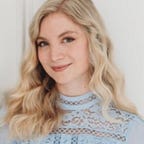How to Engineer Your Resume
Applying engineering design principles to write a powerful resume
One of the first things I learned during my engineering degree was the engineering design process. In my first year and first semester, I learned the key steps and methods that could be applied to any engineering design project. Over my four year degree, I applied that process in at least 7 projects including a full year capstone.
Starting an engineering project can be overwhelming without a tried and true methodical process to follow. You are given a broad, often unclear, problem statement from your client and are expected to turn out a design solution to solve their issues. Tackling an engineering project without guiding principles will inevitably end in missed deadlines and a lot of rework.
Like an engineering project, writing a resume can at first be intimidating without a process to follow. When writing your resume, you can apply engineering design principles to ensure your final design achieves all of the functions, objectives, and constraints that it is supposed to, while telling a great story.
Let’s start at the beginning. What is the problem you are trying to solve?
Problem Statement
The problem statement is meant to clearly and concisely articulate the problem you are trying to solve. At this stage, it is important to avoid being “solution-oriented”, meaning you should not imply the solution to the problem in this statement. In the case of the resume, the problem statement might look like the following:
- The job application requires a written document that summarizes the applicant’s qualifications for the role they are applying to in order to determine if the applicant should be interviewed.
Once you have established the problem, you must then consider the functions, objectives, and constraints of the design.
Functions
Functions describe what the design does. In the case of the resume, the functions would be:
- To articulate qualifications, such as skills and experiences, for a particular role.
Objectives
The objectives describe what the design should be.
- The resume should showcase who you are outside of work (e.g. Interests and Hobbies).
- The resume should highlight achievements, like academic excellence, awards, and scholarships.
- The resume should be one-page (if you are a student or recent grad).
Constraints
Constraints describe the limitations on the design. These are “musts”, not “shoulds”. For the resume, constraints include:
- The resume must be accurate and honest.
- The resume must be concise.
- The resume must be written clearly with minimal ambiguity.
- The experiences on the resume must be relevant to the role.
- The resume must include at least the following headings: Education, Professional Experience
- The resume must be no longer than 2 pages.
Once you have considered the functions, objectives, and constraints of your resume, you can brainstorm design alternatives. These alternatives must all achieve the desired functions and constraints, while checking off as many objectives as possible.
Design Alternatives
The design alternatives can include different resume formats or selection of experiences. Perhaps you are applying to a graphic design role — you can use your resume format to highlight your skills in graphic design by choosing a more colourful or creative template (or designing your own!). Perhaps you are applying to a management consulting role — you can use your resume to highlight your business acumen, clear communication, and analytical thinking through your format and wording.
Depending on the job you are applying for, you may select a different alternative to become your final design. This final design must be prototyped and tested before it can be considered complete. This process is simply creating a draft version of your resume, and asking others for feedback. “Testing” your resume by showing colleagues, recruiters, or resume consultants (like myself) is the best way to ensure your resume is well-written and formatted.
Final Design
The final design of your resume is the one you will submit for your job application. Like engineering design, resume writing is iterative, so your “final” design will need to be adapted for other applications. Don’t be afraid to make changes to your resume over time as you develop professionally. My resume from my first year in university looks very different from my current version.
By following engineering design principles in your resume writing, you will better understand what your resume is and how to use it as a tool to market yourself to employers. Best of luck in your design process!
